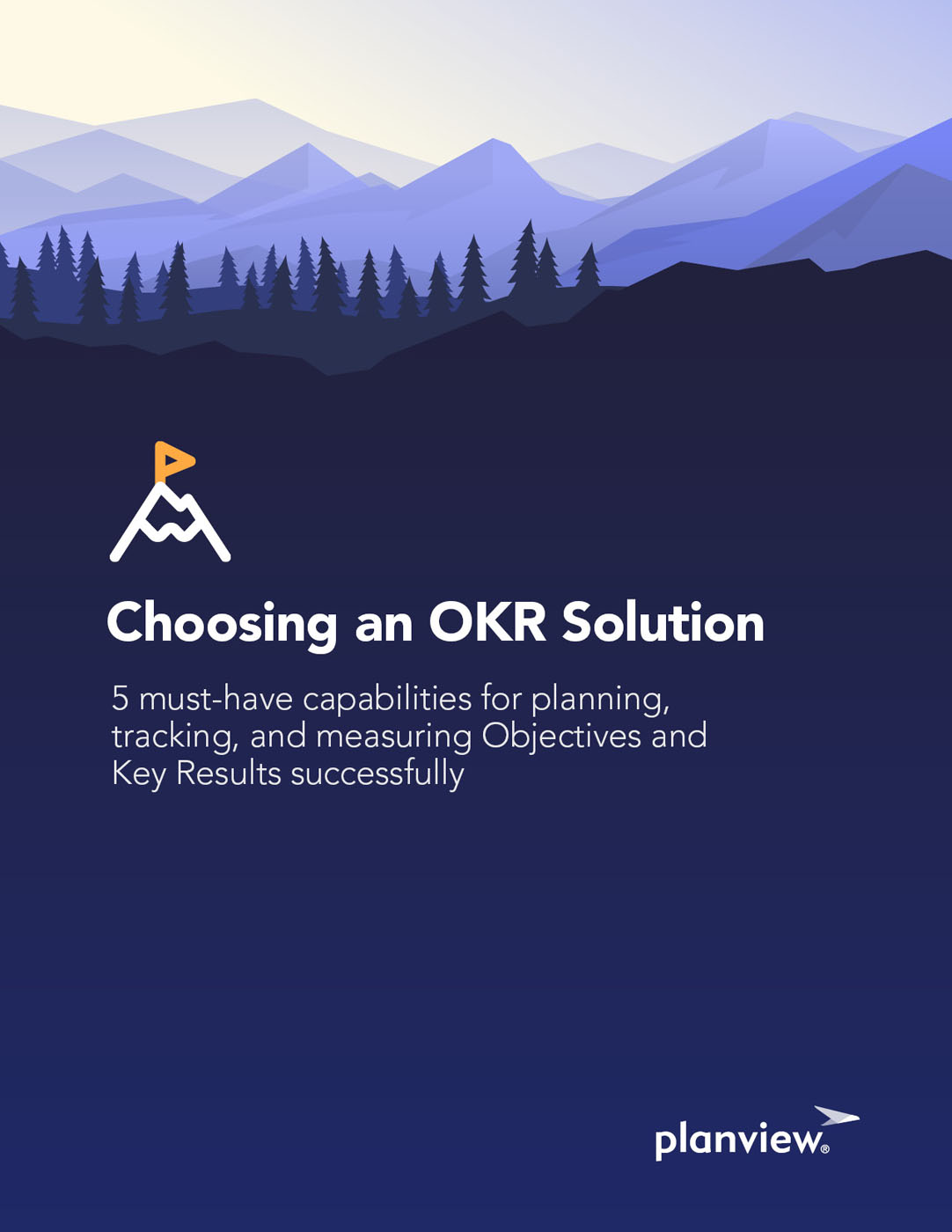Pioneered by Intel in the 1970s, Objectives and Key Results (OKRs) were designed to help people set challenging, ambitious goals with measurable results.
Since then, OKRs have become the go-to goal management framework at companies like Google, ING Bank, and Walmart, helping them drive significant growth and innovation – such as Chrome and Android at Google – across the globe.
As more companies are making the project to product shift and scaling Agile throughout their organization, OKRs are playing an essential role in the success of a company’s transformation journey.
In this guide, you’ll discover the five must-have capabilities you need in an OKR solution. You’ll also learn how Planview’s OKR solution gives you a clear line of sight into all connected work – from the Portfolio to the teams – enabling you to foster an outcome-based approach to strategy and delivery, all within a single solution.
Pioneered by Intel in the 1970s, Objectives and Key Results (OKRs) were designed to help people set challenging, ambitious goals with measurable results.
Since then, OKRs have become the go-to goal management framework at companies like Google, ING Bank, and Walmart, helping them drive significant growth and innovation – such as Chrome and Android at Google – across the globe.
As more companies are making the project to product shift and scaling Agile throughout their organization, OKRs are playing an essential role in the success of a company’s transformation journey.
In this guide, you’ll discover the five must-have capabilities you need in an OKR solution. You’ll also learn how Planview’s OKR solution gives you a clear line of sight into all connected work – from the Portfolio to the teams – enabling you to foster an outcome-based approach to strategy and delivery, all within a single solution.

